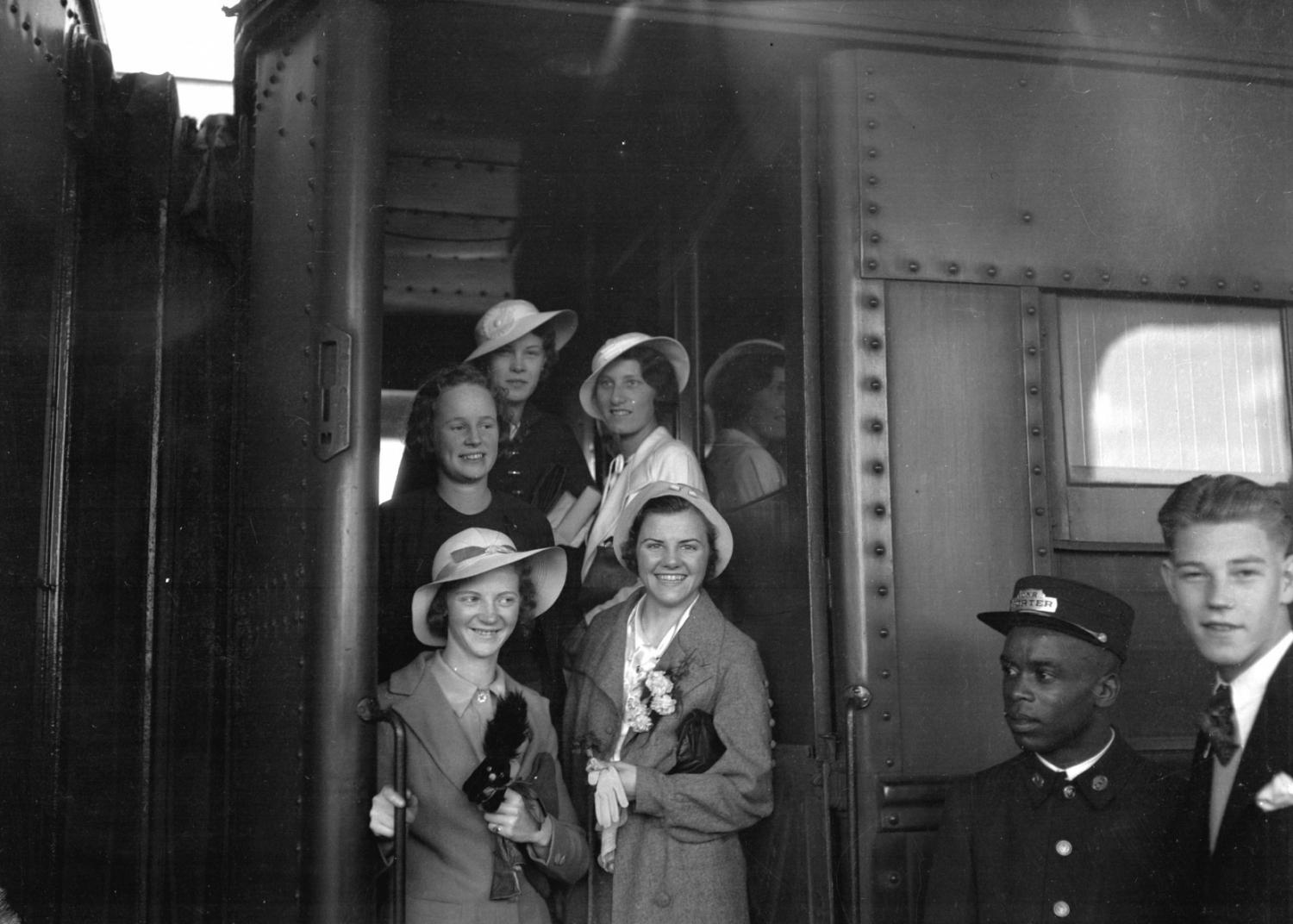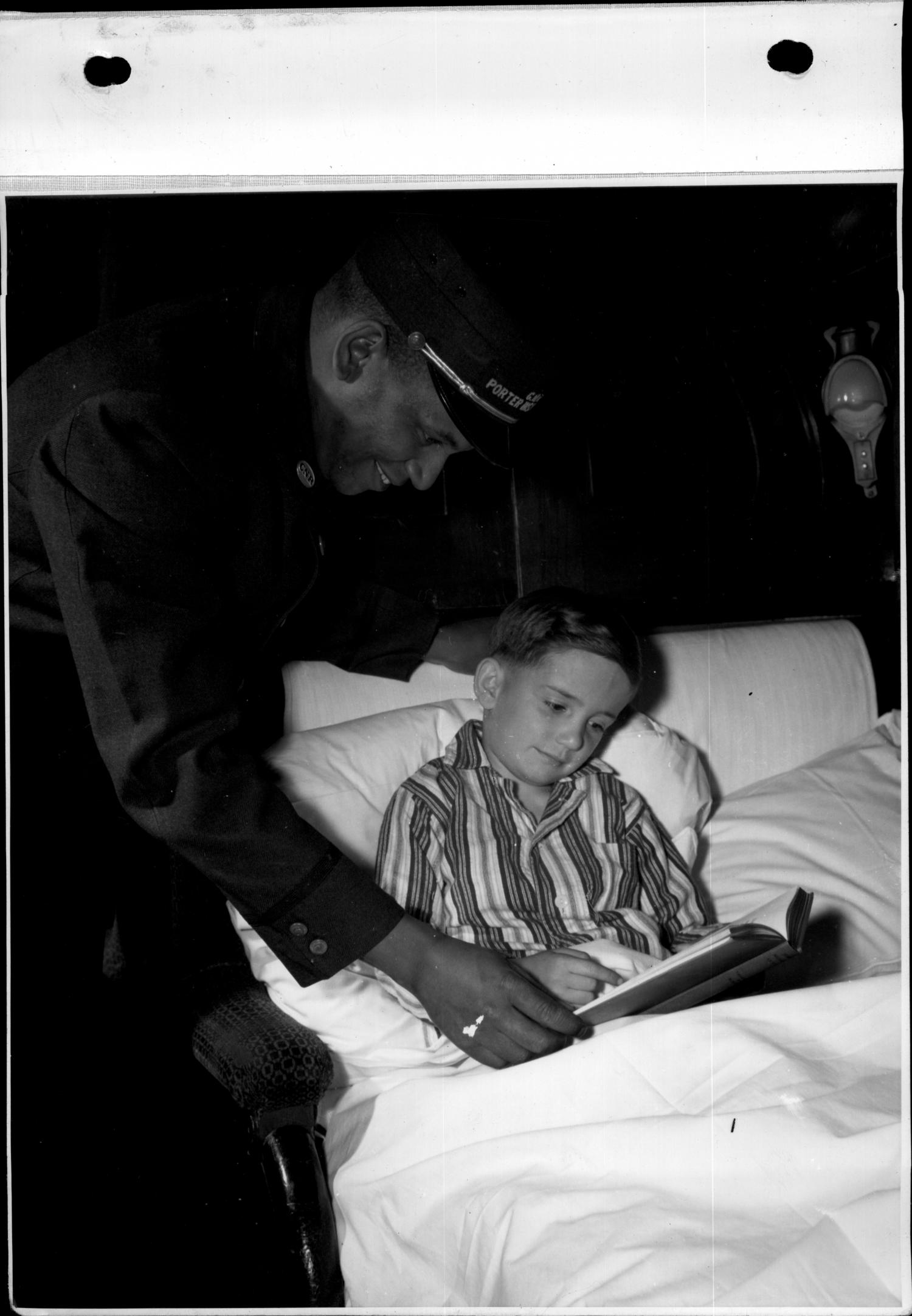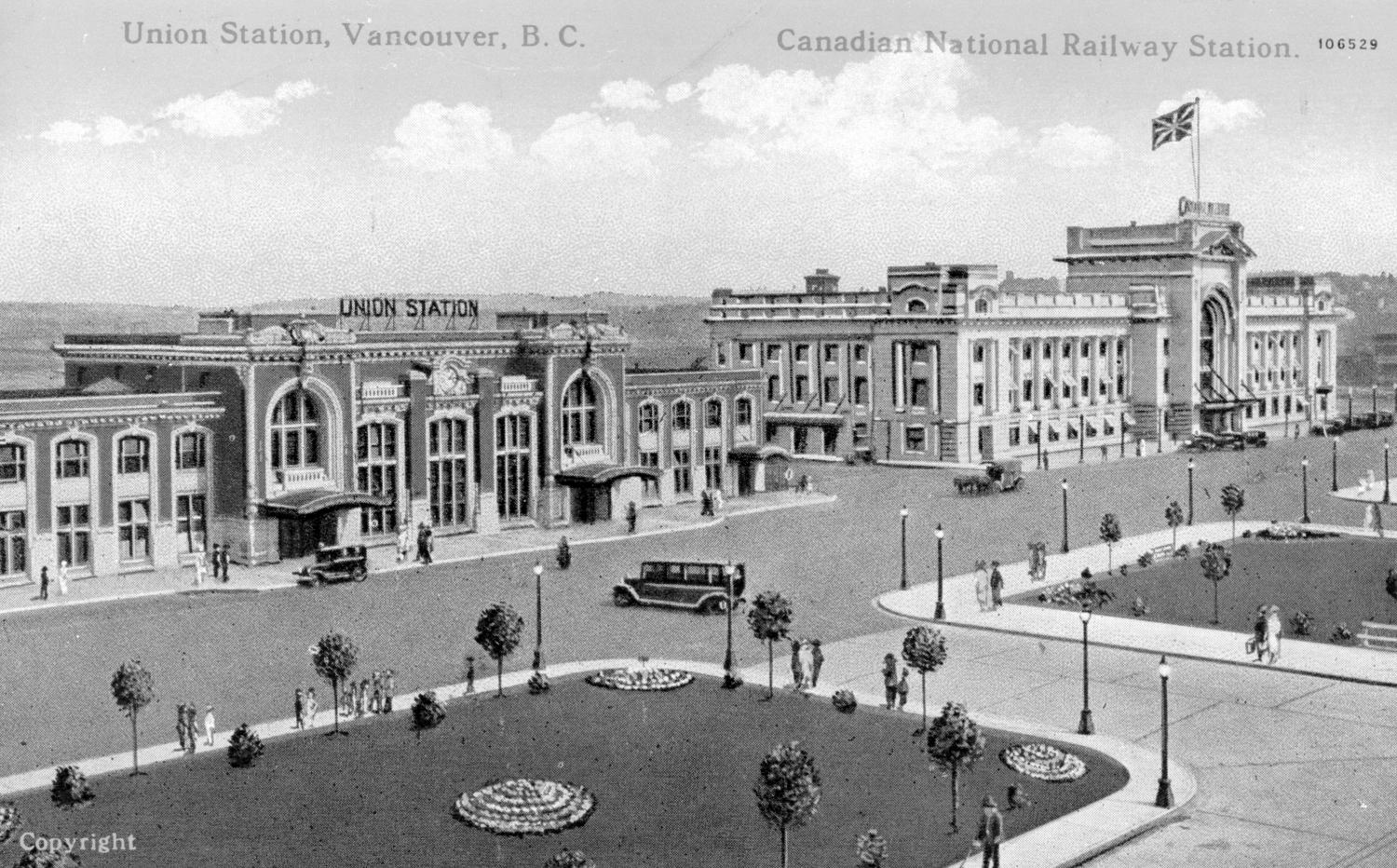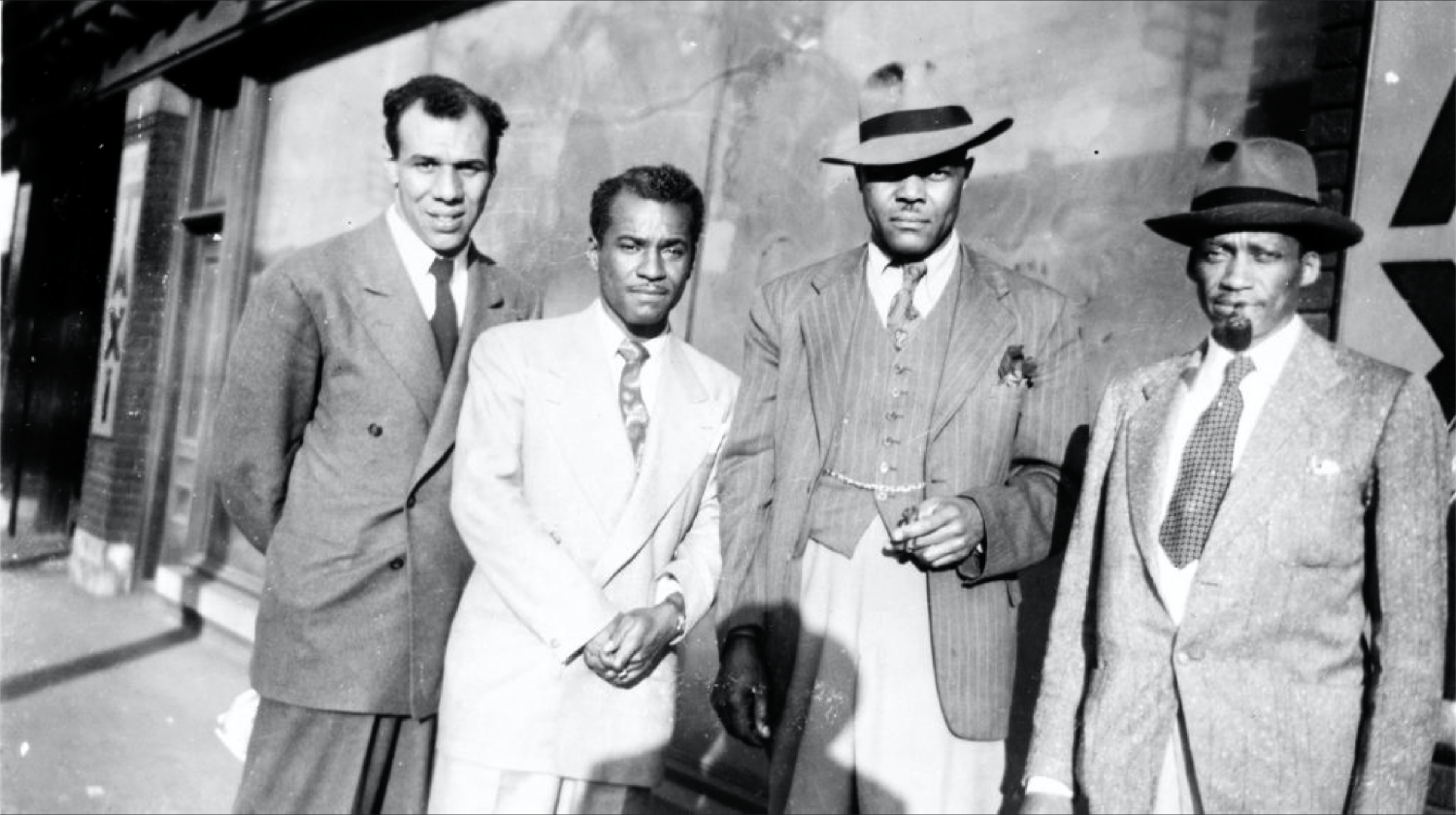Railway Porters Make History
Sleeping car porters become first Black union to sign collective agreement with a Canadian company
Date: 1945
Most passengers called them ‘George’ — a nod to George Pullman, who invented the sleeper car model that dominated the market, and a sign of the disrespect sleeping car porters faced on the job.
For much of the 20th century, Black men made up the majority of Canada’s railway porters. During the early 1900s, many came from southern American states or as far away as the Caribbean to ride the rails and settle in Canada’s largest cities. Hogan’s Alley, a bygone Strathcona neighbourhood where many of Vancouver’s early Black community lived, largely grew from its proximity to nearby train stations on Main Street, including the Pacific Central Station, originally called False Creek Station.
From 1916 to 1919, the Canadian Pacific Railway (CPR) alone recruited more than 500 porters from abroad. Their new home may have symbolized opportunity, but the work was gruelling. Sleeping car porters attended to all the needs of passengers: greeting, stowing baggage, making beds, pressing clothes, serving food and drinks, and caring for the sick or drunk, to name a few. Porters also acted as security, relied upon to suss out thieves and other troublemakers. “We were babysitters,” said Herb Carvery, a porter from Winnipeg. “Not only for kids but for adults.”
Away from their families for weeks at a time, porters were on-call 24 hours a day and only slept about three hours a night. Without proper sleeping quarters, they were often forced to set up a makeshift bed in the employee smoke room or make do with a simple folding seat. The long hours and heavy workload led many to call themselves “sleepy porters” rather than sleeping car porters.
Despite all of this, railway companies compensated them very little. Porters received meagre wages, few raises, and no promotions, barred from higher-paid positions like conductor. They also had to pay for their uniforms and meals, as well as any missing passenger towels or bed sheets. To compensate for their little pay, porters worked hard for tips, often shining shoes while the rest of the train slept. Many had advanced educations, but systemic discrimination prevented Black men from establishing more lucrative careers. Bosses took advantage of this. Porters could be fired at a moment’s notice without cause.
In the early 20th century, Canada’s largest railway union, the Canadian Brotherhood of Railway Employees, only allowed white members. So, in 1917, Canadian porters founded the Order of Sleeping Car Porters, the first Black railway union in North America. Within its first couple of years, it had negotiated contracts with the Canadian Northern Railway and the Grand Trunk Railway. Then it hit a roadblock. In the early 1920s, the CPR fired 36 porters due to union involvement. This cast a chill over labour activity for nearly two decades.
By 1939, workers had begun organizing again with help from the American Brotherhood of Sleeping Car Porters (BSCP). Three years later, Canadian porters voted to unionize and set up BSCP chapters across Canada. Frank Collins, the eldest of four brothers who all worked as porters, was the founding president of Vancouver’s BSCP branch.
In May 1945, Canada’s porters finally signed a collective bargaining agreement with the CPR. The first-ever collective agreement signed by a Black union in Canada resulted in higher wages, overtime pay and one week of paid vacation. Along with improved working (and sleeping) conditions, the CPR also agreed to issue nameplates, which porters could point to whenever someone called them ‘George.’ Nine years later, following legal action taken by the union, George V. Garroway became Canada’s first Black train conductor.
Sources:
1. A. Philip Randolph. The History Channel, 27 Oct. 2009, www.history.com/topics/black-history/a-philip-randolph.
2. Belshaw, John Douglas. #732 Race, Rails, and Hogan's Alley: A Review of "They Call Me George: The Untold Story of Black Train Porters and the Birth of Modern Canada" by Cecil Foster. The Ormsby Review, 27 Jan. 2020, ormsbyreview.com/2020/01/27/732-belshaw-foster-black-train-porters/.
3. Black Train Porters on the Canadian Railroad. Coquitlam Heritage Society, 29 Sept. 2020, www.coquitlamheritage.ca/blog-pages/blacktrainporters.
4. “Blacks and Labour Unions.” African Canadian Workers: From the Second World War to 1960, Workers Arts and Heritage Centre, 2007, www.virtualmuseum.ca/edu/ViewLoitDa.do;jsessionid=98935431F488CB6F5B2B49F28ECE8436?method=preview&lang=EN&id=18721.
5. “Brotherhood of Sleeping Car Porters.” African Canadian Community, Windsor Mosaic, 2005, www.windsor-communities.com/african-labour-brotherhood.php.
6. Carson, Jenny. Riding the Rails: Black Railroad Workers in Canada and the United States. Labour/Le Travail, Fall 2002, www.jstor.org/stable/25149282.
7. Frank Collins: Union Leader and Black Activist in 1940s Vancouver. BC Labour Heritage Centre, 5 Mar. 2018, www.labourheritagecentre.ca/frank-collins-union-leader-black-activist-1940s-vancouver/.
8. Henry, Natasha. Sleeping Car Porters. Canada's History, 31 Jan. 2018, www.canadashistory.ca/education/lesson-plans/sleeping-car-porters.
9. Hoye, Bryce. A Century Ago, Winnipeg Railways Became 'Birthplace' of Fight for Black Canadian Workers' Rights. CBC News, 29 Feb. 2020, www.cbc.ca/news/canada/manitoba/sleeping-car-porters-winnipeg-1.5477349.
10. Mathieu, Saje. “North of the Colour Line: Sleeping Car Porters and the Battle Against Jim Crow on Canadian Rails, 1880-1920.” Labouring Canada: Class, Race, and Gender, Oxford University Press, 2008, studydaddy.com/attachment/151887/Mathieu+North+of+the+Colour+Line.pdf.
11. Montgomery, Marc. The Story of the Black Porters on Canadian Railways. Radio Canada International, 23 Jan. 2019, www.rcinet.ca/en/2019/01/23/the-story-of-the-black-porters-on-canadian-railways/.
12. Oyeniran, Channon. Sleeping Car Porters in Canada. The Canadian Encyclopedia, 8 Feb. 2019, www.thecanadianencyclopedia.ca/en/article/sleeping-car-porters-in-canada.
13. Tomchuk, Travis. Black Sleeping Car Porters. Canadian Museum for Human Rights, humanrights.ca/story/sleeping-car-porters.
14. Yang, Jennifer. Demeaned, Overworked and All Called George: How Black Train Porters Transformed Canada. The Toronto Star, 1 Feb. 2019, www.thestar.com/news/gta/2019/02/01/the-madness-of-being-george-how-black-train-porters-demeaned-overworked-and-called-by-the-same-name-helped-transform-canada.html.





